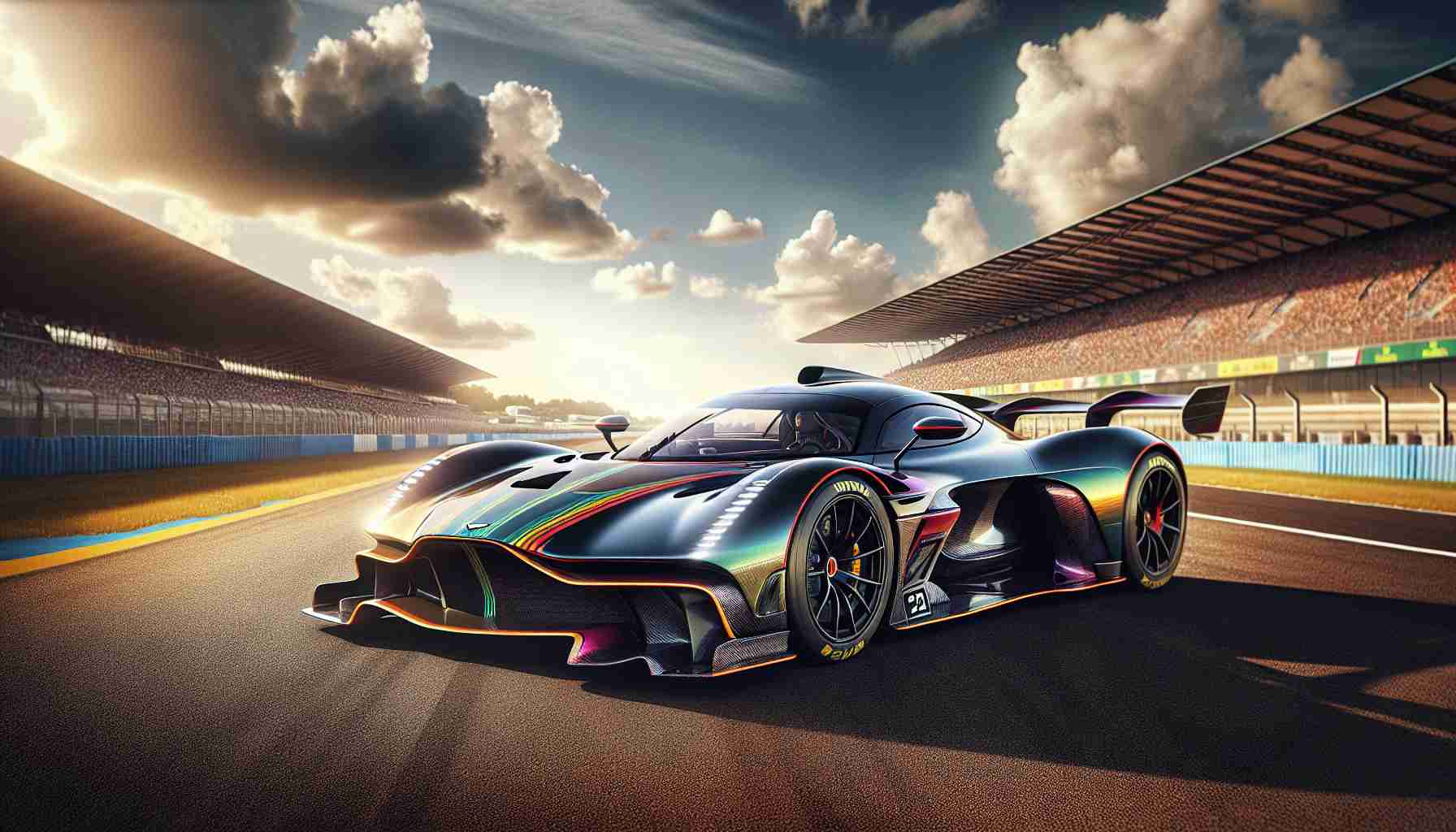- Aston Martin’s Valkyrie LMH hypercar makes a historic return to endurance racing at the 24 Hours of Le Mans.
- The hypercar features a naturally-aspirated V12 engine tuned for compliance with LMH regulations, delivering 500kW.
- It prioritizes improved torque and efficiency while maintaining high performance amidst competitive turbocharged rivals.
- The car showcases innovative aerodynamic designs, including a dorsal fin, and a quick tire change system for enhanced adaptability.
- The Valkyrie LMH has undergone extensive testing, totaling 15,000 km, to ensure reliability and performance.
- British drivers Harry Tincknell and Tom Gamble will pilot the #007 vehicle in its upcoming races.
- Aston Martin aims to reclaim its legacy and spark renewed interest in British endurance racing.
The excitement in the automotive world is electric as Aston Martin unveils its groundbreaking Valkyrie LMH hypercar, primed for a historic showdown at the legendary 24 Hours of Le Mans. This is not just any race car; it’s a fierce competitor, uniquely crafted from a road-going vehicle and representing Aston Martin’s fierce ambition to conquer the endurance race after a six-decade hiatus.
What sets the Valkyrie LMH apart? In a sea of turbocharged competitors, it proudly boasts a naturally-aspirated V12 engine, albeit tuned down to comply with new LMH regulations. While its road-going cousins roar with an exhilarating 865kW, this racer delivers a sensible yet potent 500kW, focusing on improved torque and efficiency without sacrificing performance.
With a stunning new aerodynamic design featuring a prominent dorsal fin and a swift tire change system, every inch of the Valkyrie LMH is engineered for speed and adaptability. After clocking 15,000km of rigorous testing globally, it’s ready to take on challengers. British drivers Harry Tincknell and Tom Gamble are set to pilot the flagship #007 vehicle, while its sister #009 car will bring talent from Denmark and Spain into the fray.
As the Valkyrie LMH prepares for its debut at the Qatar 1812km, all eyes will be on Aston Martin, poised to reclaim its spot in endurance racing history. Can this technological marvel clinch victory and ignite the British racing spirit? Only time will tell, but the stage is set for an unforgettable showdown!
Unleashing the Future: Aston Martin’s Valkyrie LMH Ready for Racing Glory!
Aston Martin Valkyrie LMH: A Deep Dive into Specifications and Innovations
Aston Martin’s Valkyrie LMH isn’t just another hypercar; it’s a fusion of cutting-edge technology and automotive heritage, designed to dominate the track at renowned events like the 24 Hours of Le Mans. Here’s everything you need to know about this thrilling race car, from its specifications to its limitations and market comparisons.
# Key Specifications and Features
– Engine: Naturally-aspirated 6.5L V12, tuned to produce 500kW (down from the road car’s 865kW).
– Weight: Cardboard structure weighing under 1,000 kg, providing a lightweight advantage.
– Aerodynamics: Enhanced aerodynamic design featuring a dorsal fin, optimizing airflow and downforce.
– Tire Change System: Quick-change tire technology, reducing pit stop times.
– Testing: Completed over 15,000 km of rigorous testing across various conditions to ensure reliability and performance.
# Pros and Cons
Pros:
– Iconic design and engineering prowess from Aston Martin.
– Advanced naturally-aspirated engine offers unique performance characteristics.
– State-of-the-art aerodynamics enhance speed and handling.
Cons:
– Lower power output compared to the road-going counterpart may disappoint some performance purists.
– Limited adaptability for commercial applications due to its race-specific design.
– High cost associated with development and maintenance for private teams.
# Market Insights and Trends
The hypercar market is evolving, with manufacturers increasingly focusing on sustainable solutions while maintaining performance. Aston Martin’s embrace of a naturally-aspirated engine showcases a trend towards pure performance rather than sheer power numbers. This focus on engineering innovation reflects a broader industry push towards sustainability, with many manufacturers exploring hybrid technologies.
# Predictions and Market Analysis
Experts predict that the success of the Valkyrie LMH in endurance racing could pave the way for more naturally-aspirated designs in the future, particularly as regulations tighten on emissions. Additionally, Aston Martin’s success could reignite interest in endurance racing, drawing in new fans and potentially various manufacturers back into the sport.
Frequently Asked Questions
1. What makes the Valkyrie LMH unique compared to other hypercars?
The Valkyrie LMH stands out for its combination of a naturally-aspirated V12 engine and cutting-edge aerodynamic features. While many hypercars rely on turbocharged engines, Aston Martin’s approach emphasizes a return to the raw racing spirit with efficiency.
2. Who are the drivers competing in the Valkyrie LMH at the upcoming race?
British drivers Harry Tincknell and Tom Gamble are set to pilot the flagship #007 vehicle, while the sister #009 car features a talented lineup from Denmark and Spain. This diverse team aims to leverage their expertise to enhance the car’s performance on the track.
3. What is the significance of the Valkyrie LMH’s participation in endurance racing?
The Valkyrie LMH represents Aston Martin’s return to endurance racing after a 60-year absence, marking a significant moment for the brand. Its performance could not only secure victories but also revive interest in Aston Martin’s racing legacy in international motorsport.
For more insights on Aston Martin and its innovative automotive technologies, visit Aston Martin’s official website.














